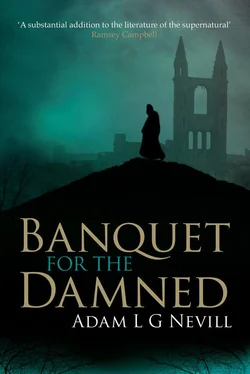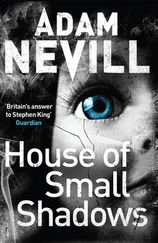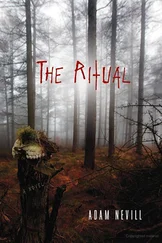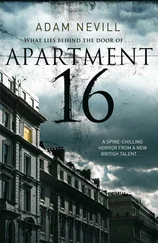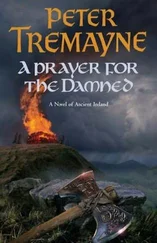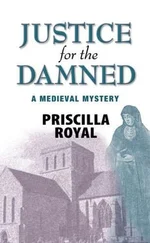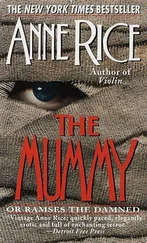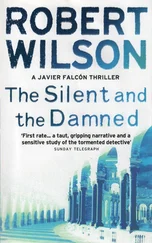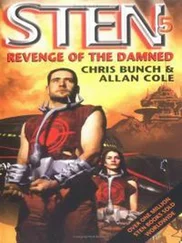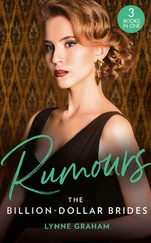He then explained to Hart how the shaman had been caught transforming, and quickly despatched. It had been necessary to dismember the shaman and his infected family before torching their remains. 'If you commune with the dead and feast on the living,' he instructed, 'you give up your right to live.'
They had ways of dealing with unwelcome hosts, Hart learned, and knowledge as old as the steaming depths of the forest about them. And the words of their own patron saints to expel unwanted companions, that whispered and waited, full of hate, only rising to the surface when the time was right to breathe the air of man. The community had exercised their own brand of social control over a deviant in Santiago al Palma, but now those technical terms that served an anthropologist — 'social control' and 'deviant' — seemed to lose their weight. This phenomenon defied scholarly language. It was a realm of nightmare.
From Guatemala, Hart travelled to the Amazon Basin, excited by a journal article reporting an outbreak of demonic possession amongst the Mundurucu Indians. Once more, he arrived months after a violent backlash from terrified locals, but a line of thin poles, set back from a waterfall and shadowed by dark-green foliage, brought him to his knees in shock. On top of each pole a brown head had been placed, mounted above grisly remains in wooden bowls that still buzzed with crowns of flies.
A possessed sorcerer and his disciples had been exorcised by the most bloody means a head-hunter legacy could devise. Hart lost his appetite not solely as a result of dysentery.
Word of mouth outlasted any missionary's bible in that lost region of the Americas. And again, in the Amazon villages, he glimpsed more of the insanity surrounding the night-terror legacy. According to witnesses, a dozen teenagers had disappeared within the course of a few months, each of them having complained of a sleeping illness. The Mundurucu Indians blamed an errant sorcerer — one of a caste of holy man feared for centuries, predating the Spanish conquest. The ritual execution of the sorcerer followed. It was merely a way, his academic discipline would instruct, for a culture to deal with a scapegoat. But Hart began to think otherwise. He had seen the ravaged remains of the children's bones in the undergrowth — the victims of the sorcerer and his night terrors.
Once again, when the sorcerer was executed, the epidemic stopped.
Old footsteps left heavy prints. The further Hart looked the more evidence he uncovered. In the thirties a French trader called La Faye had written a short book about nocturnal manifestations of spirits throughout Asia. A man had to get down on all fours and understand the world in different tongues, and that is what La Faye had done with the Kachin tribe in Burma, detailing how, in 1934, a contagion of the night terror, or the Hpyi, had been ruthlessly suppressed, resulting in the executions of some ten tribesmen believed to have been possessed by the Hpyi spirits.
Different names, different places: from the highlands of New Guinea to the frozen ground in Newfoundland, Hart chased night terrors and the people who dealt with them. Old tongues and strange magic protected the tribes. Bloody executions and ritualistic magic were accepted without doubt as cures. But what do they have in St Andrews?
Having reviewed European occultism as an undergraduate, he knows something of witchcraft, and the 'evil eye' myths of Greece and Ireland, but night terrors? There is little written from an anthropologist's perspective on the occult in Europe, so his knowledge suffers limitations. It is more the role of an historian to delve into the sinister offshoots of European culture, while the anthropologists concert their efforts in Asia, Africa and the Americas. As far as he knows it takes belief, real belief, hallucinogens, self-discipline, and an entire hierarchy of traditional practice and lore to even get close to an aberrant spirit. In Europe, Christian belief has taken man out of nature. Mystics and visionaries have gone. Science and economics are the new faiths. So how has something broken back through? It cannot just occur: where is the ritual, the knowledge, the decade of mage-like study, the creation of the right environment for contact, and the final leap of faith in St Andrews? Where is the source?
Illumined by something more than the first stars and the moon, the sky remains bright. It's as if the night is unwilling to release the sun completely after it has baked the ground hard and warmed the stones of St Andrews throughout the long day. From the air, the orderly skeleton of streets in neat rows of interlocking white and grey, lead to the fallen cathedral and the Eastern harbour beyond.
Amongst the cathedral's tombs and graves, still protected by walls beaten by coastal weather for centuries, the lonely sentinel of St Rule's Tower stands, solid and rectangular between sands East and West, the sea to its front and the town in line behind. Like a stage, the cemetery is lit by the electric lights on the perimeter walls and only awaits its players.
Elsewhere, the slow airs of late summer have drowned the town in deep slumber. Within firm walls and behind curtains that sway and then brush together it is time to sleep. Sacred sleep. Sleep from the heat; sleep after a day in the hot office and shop; sleep from the drowsy meander the day makes toward nightfall; solace in sleep after evening hours endured before flickering television screens. Some of the town lights, however, have refused to wink out; some people read by lamplight or laugh in early-hour gatherings where glass after glass of wine puts back the time for bed; others are unable to settle, and a few will not allow themselves rest.
Maria checks her bedroom door-lock for the third time in an hour before returning to her black tea: no sugar. Cupping the steaming mug, she watches the slice of lemon float in the dark liquid: no calories in citrus fruit. Strained eyes in her thin but pretty face flick across to a brass alarm clock: two minutes to midnight. Would Chris forgive her? His perfect face smiles back from the photograph beside her clock, framed in pewter.
'What's wrong with you?' he'd shouted that morning in a voice she often heard bellowing from the rugby pitch — a voice he uses when he demands the ball from a team-mate, when he believes he can reach the touchline and control the game. A voice she hears when he's drunk and angry and someone has dared disagree in the pub. 'I can't touch you anymore. You keep pulling away from me. What's the matter with you?'
But how could Chris even begin to understand? Those big brown eyes, with a solid and ever-confident stare, beneath a floppy fringe, would mist at the very first sign of an expressed emotion, or doubt, or inner query, or at anything not as material as a computer or car. Maria envies him: able to charge through life in a blazer and silk tie, his thoughts ordered meticulously like his possessions and neatly pressed clothes; able to do things that are instantly justifiable to himself, or not do things because they aren't right, because he says so. There are no abstractions or subtleties in Chris's life — he can hold the world in his hands as something measurable and tangible, like concrete.
'You scare me. Did you throw up again this morning? Christ, girl, I don't understand you. No one can stay awake for that long. It's not right. It's not normal. Listen to me, don't roll your eyes or shrug your shoulders. Get something from that doctor.'
'But I have had some sleep. And I missed my appointment.'
'Yeah, for two hours this afternoon while I watched you. I can't do this every day. Eat a proper meal and get some rest for God's sake. I have training and work to do.'
Maria hates him. Maria loves him. And at least her anger and hunger may keep her awake for the third night running.
Читать дальше
